FWCM 08: Karjakin strikes the first blow
After seven consecutive draws, we finally had a decisive game! The Challenger won game eight and now leads the match with a score of 4.5-3.5. It was an extremely poor show by the World Champion who shunned many drawing opportunities, even came back from a lost position, but eventually had to bite the dust because of his complete lack of objectivity. Sergey Karjakin has played solid chess and thoroughly deserves this victory. We analyze the game and bring to you the key moments explained in didactic and lucid style.
Pictures by Albert Silver
FWCM 08: The curse of lack of objectivity
I remember a game that I played in the Dubai Open 2015. My opponent, (say Mr.X), was was rated nearly 250 points below me. I studied his games before the encounter and realized that this was his first tournament after 11 years. Mr.X was playing not so strong chess and I had made up my mind that come what may I must beat him at all costs. When the game began I was really confident and played quickly. Mr.X was upto the task and soon I was staring at two options: play risky chess or just go for an equal position with low chances to win. Of course, I chose the former. I don't know what happened that day, but my opponent found all the resources and took over the advantage. Mr. X was noticeably nervous and offered me a draw in a winning position. My logical brain shouted me to take the draw, after all I was losing, but my emotions shouted, "He is under time pressure, let's try to fool him!" I played on and after a few accurate moves by Mr. X I realized that I had simply nothing to play for. I resigned the game and had to talk the long walk back home.
What really happened above, was that I was so engrossed in playing against my opponent that I didn't even look at the position in front of me! In chess being objective is a huge positive quality. You must know what your position is capable of. You might want to win at all costs, but if the pieces on the board cannot fulfill that it might be the best to just accept the draw and start the next game afresh.
Usually this lack of objectivity is not seen in top players. That's the reason why they are on top! However, there come moments when the right hemisphere of the brain takes over and doesn't listen to the logical arguments of the left brain.
This is exactly what happened to Magnus Carlsen in the eighth game. After reaching an equal position out of the opening and the middlegame the World Champion had many opportunities to force the draw. But he wanted to win. He gave up two pawns and was just losing. But Karjakin blundered in time pressure as well and now the game was just drawn. The forty moves had been reached and it made sense to calmly take stock of things. Magnus continued playing for a win and in the end had to bite the dust. Karjakin won the game and now leads the Match with a score of 4.5-3.5.
Key positions of Game eight
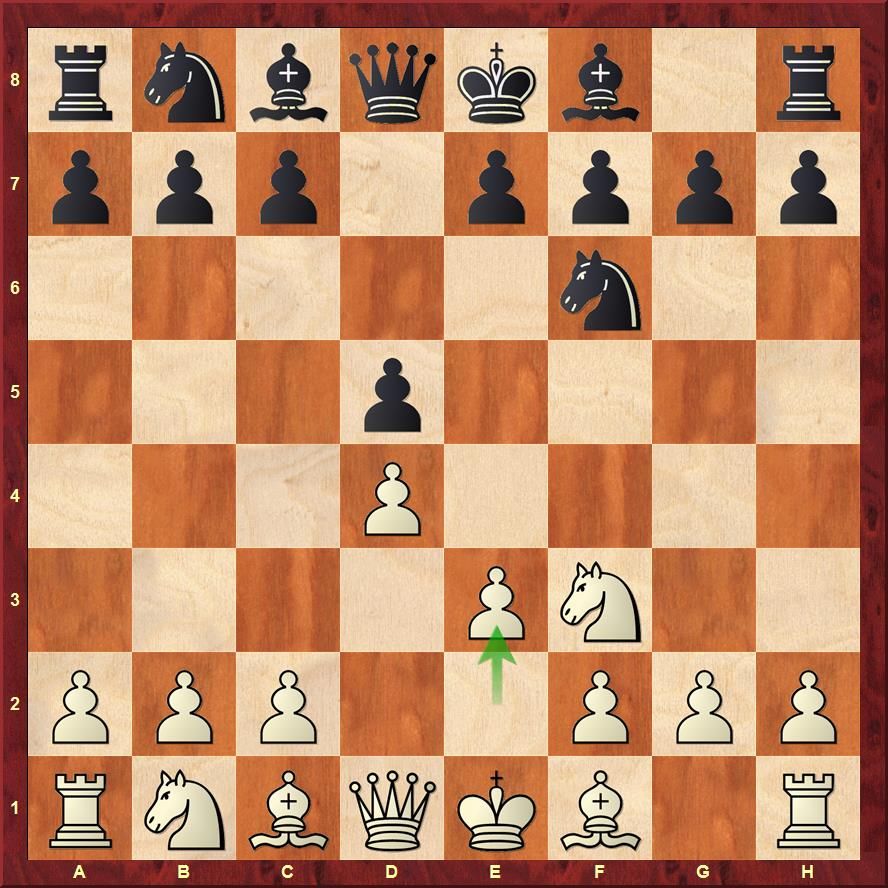
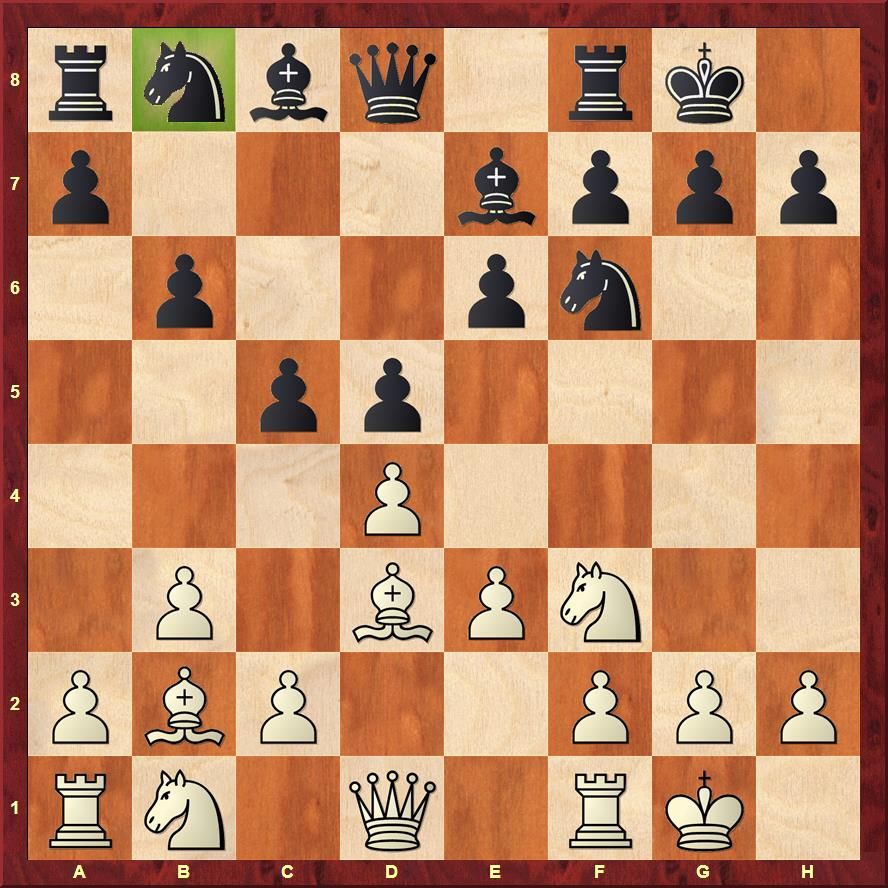
An excellent decision by Karjakin was not to develop his knight from b8. He kept his options open and in the end the pony was quite well placed on d7.
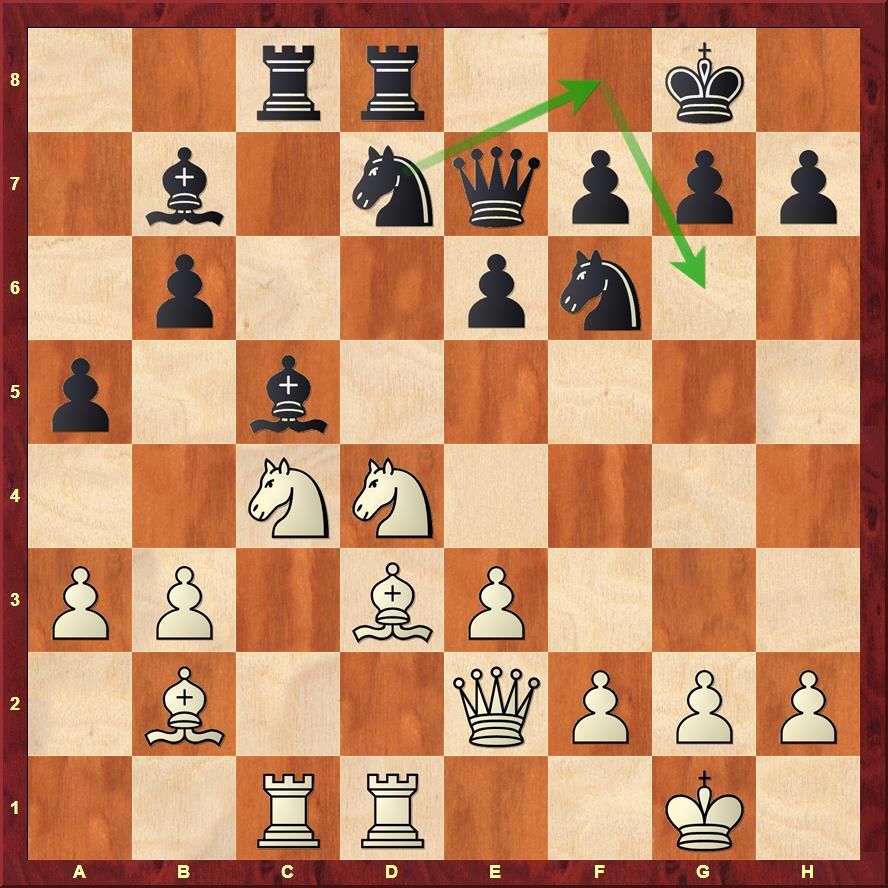
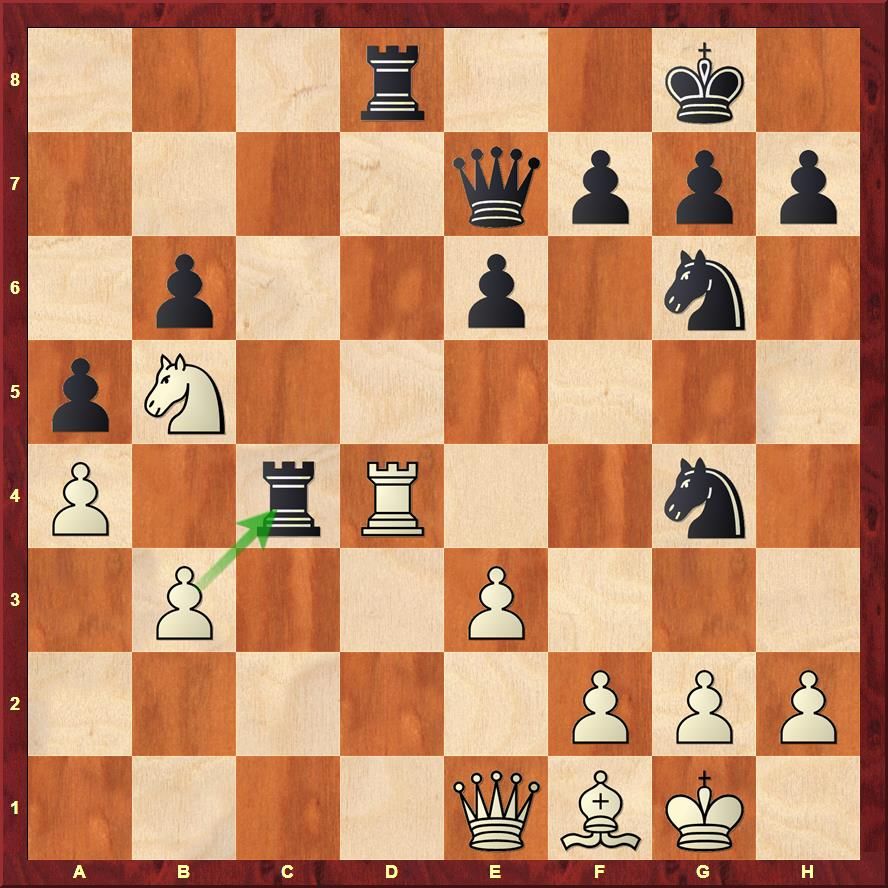
Taking the rook back on c4 was possible with the bishop. However Magnus chose to take it with the pawn. This according to me was already a step in the dangerous direction of playing unobjectively, because the pawn on c4 had become weak and the c5 square was the perfect outpost for the black knight.
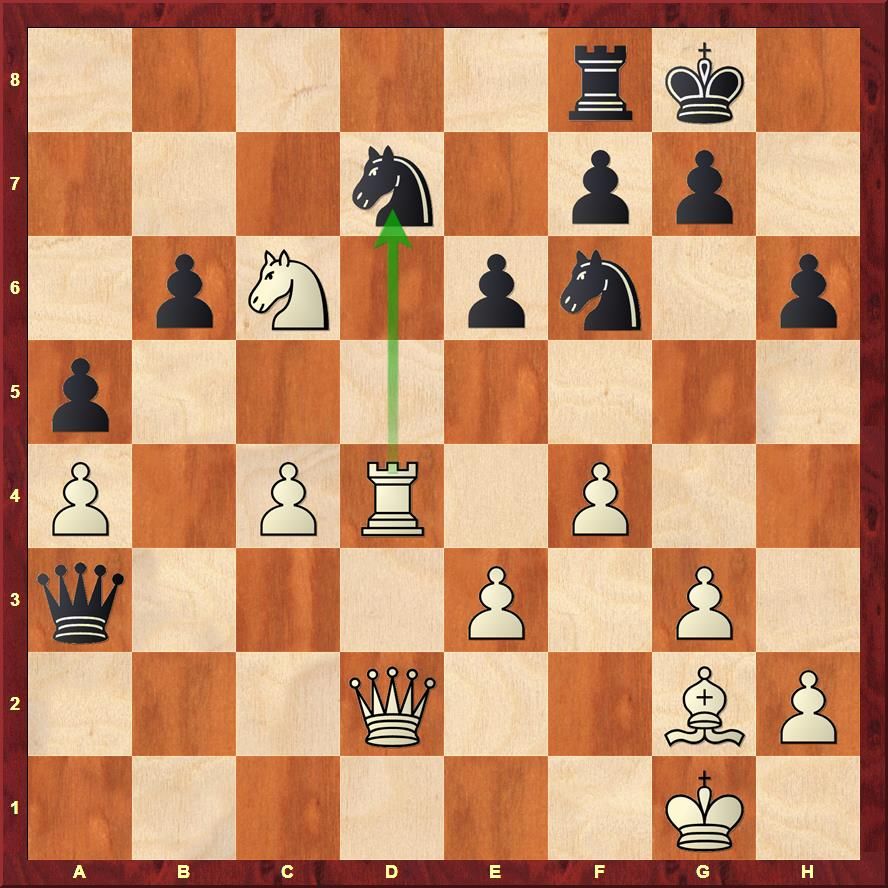
Taking on d7 was clearly possible. It would have led to an equal position. However, Magnus didn't like his chances and played h3. This allowed Black to take over the initiative with ...Nc5!

35.c5 looked like a smart move by Magnus. If the queen takes then the knight on a4 is hanging. And if the knight takes on c5, then Rxf8 followed by picking up the f6 knight. However, Sergey just took on d8 and then ...Nxc5 and he was already two pawns up!
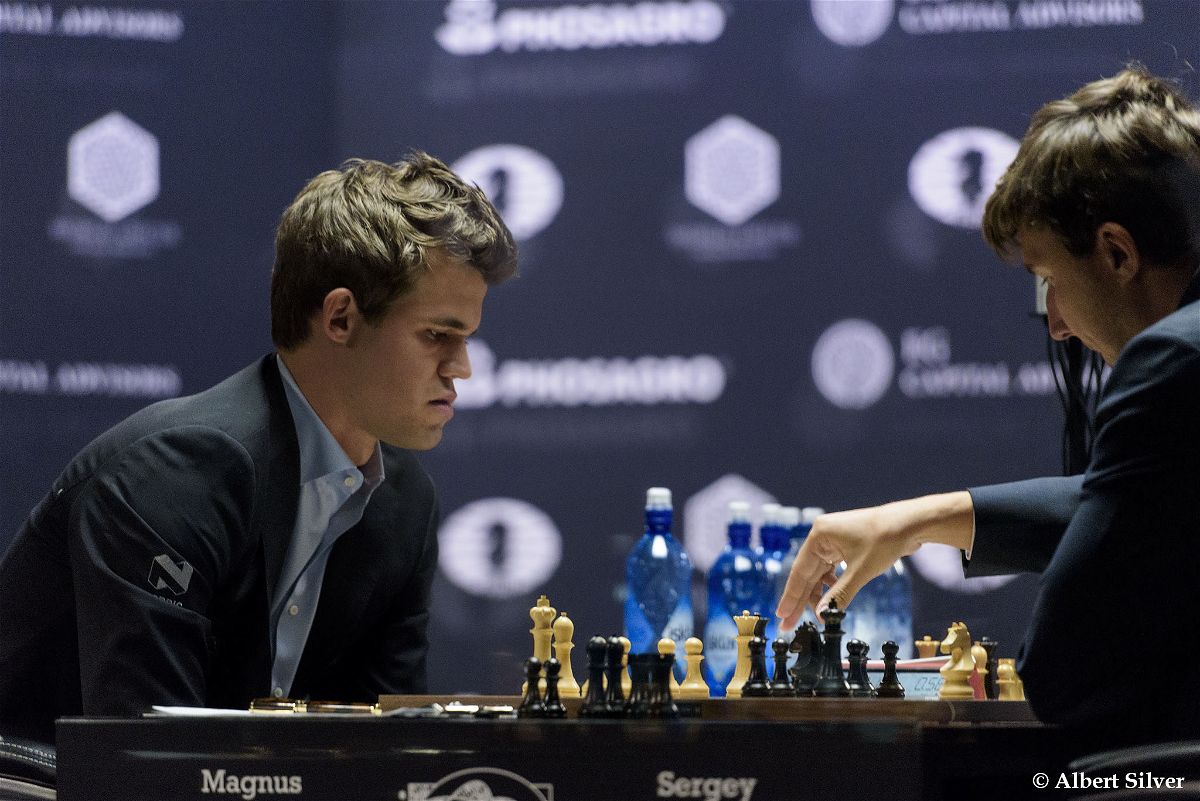
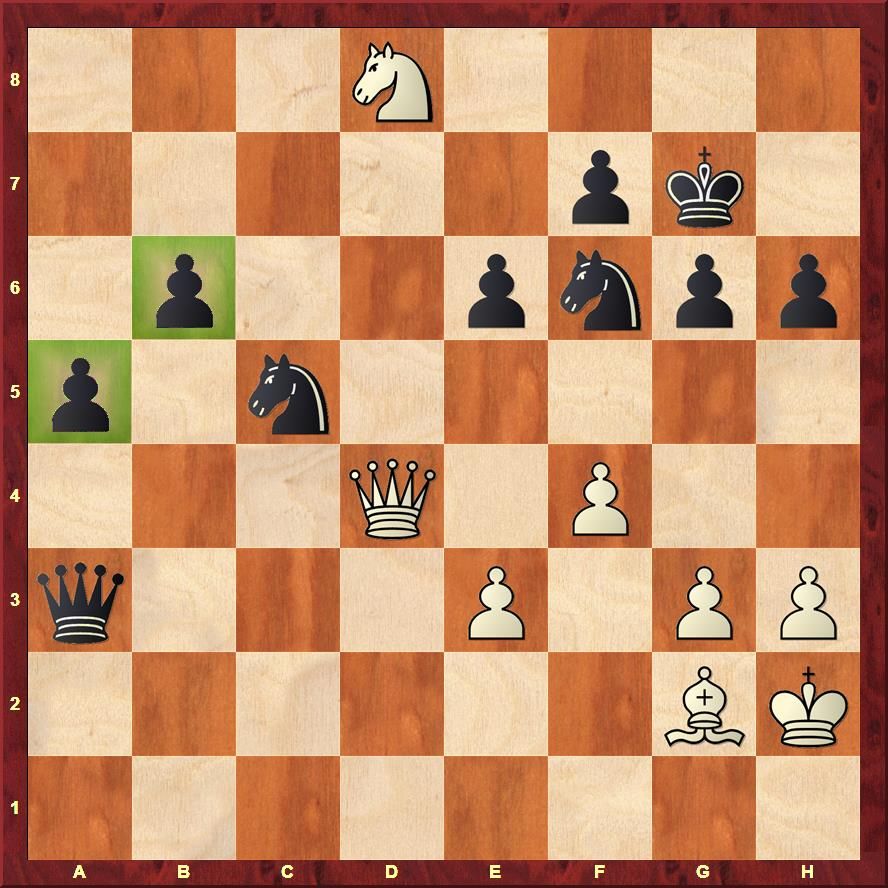
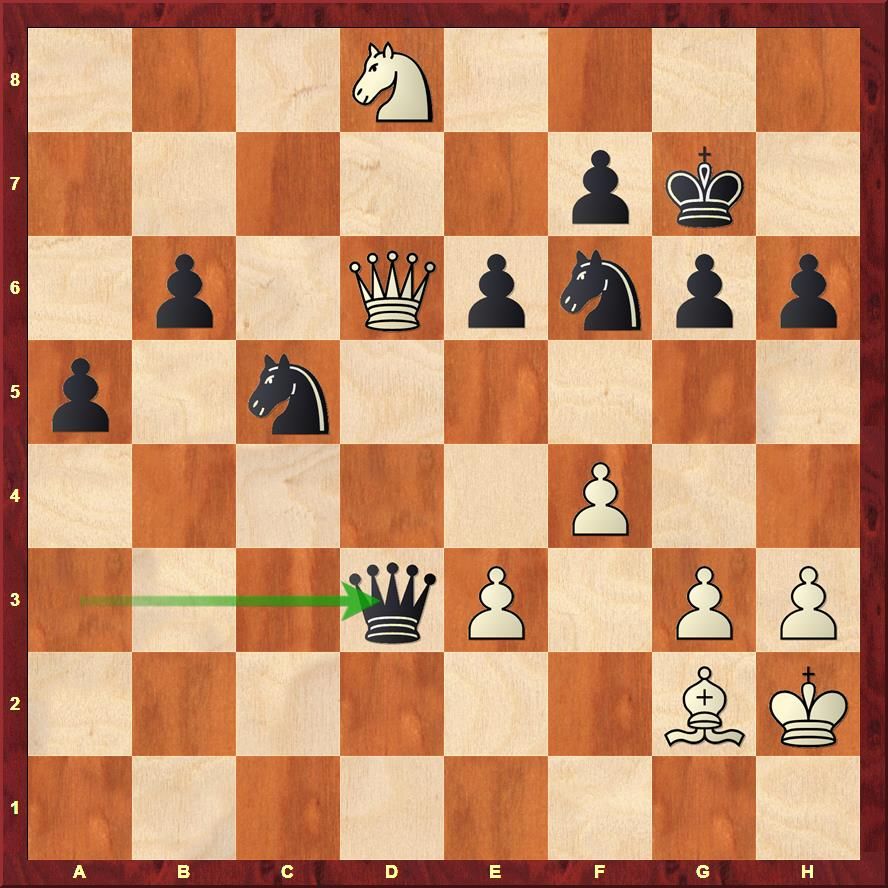
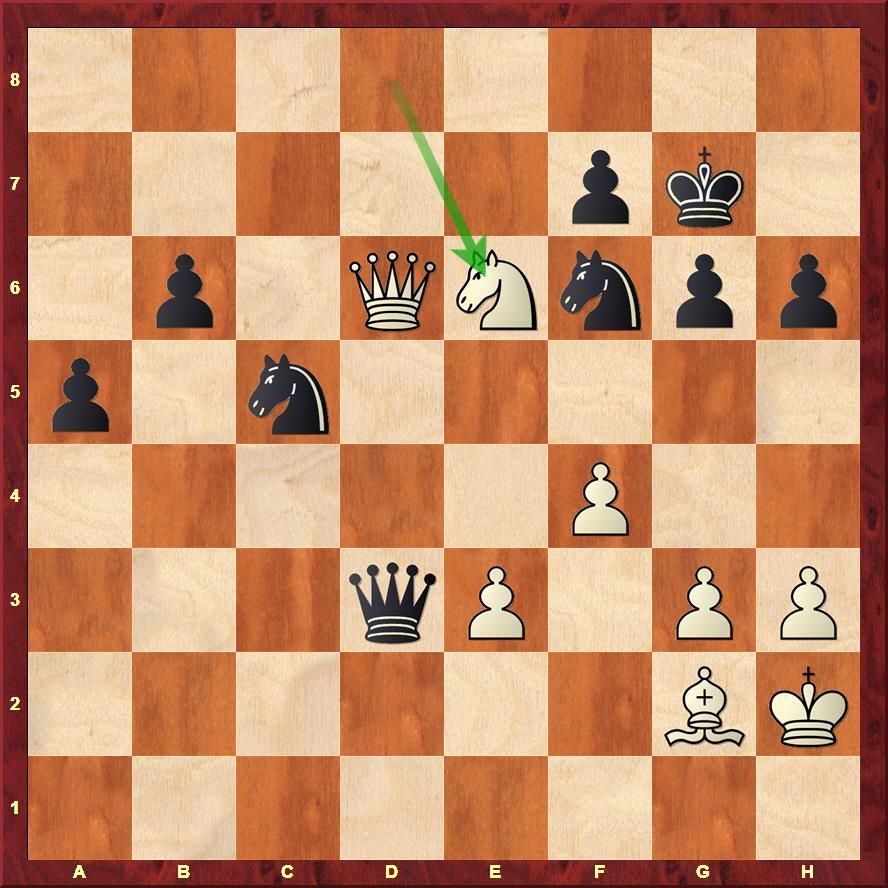
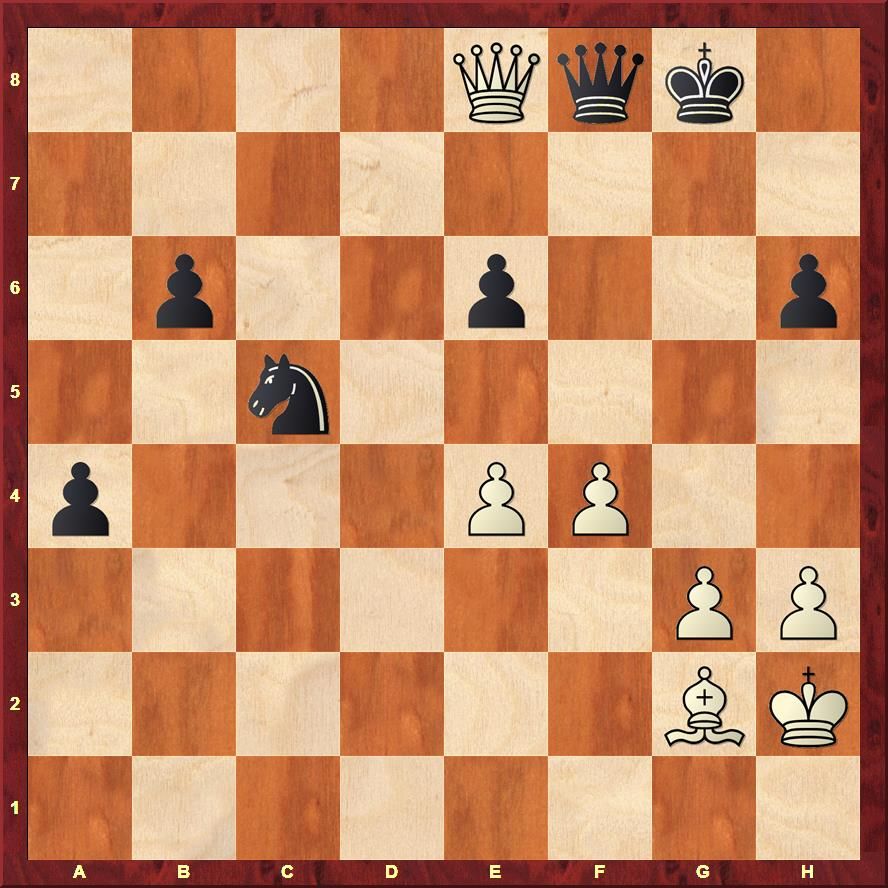
The material balance had been restored, but the position was clearly drawn. White didn't have resources to mate the black king and the a-pawn is just too strong. It was surely logical to give a perpetual check and prepare for the next game. But Carlsen didn't give up his attempts to win.
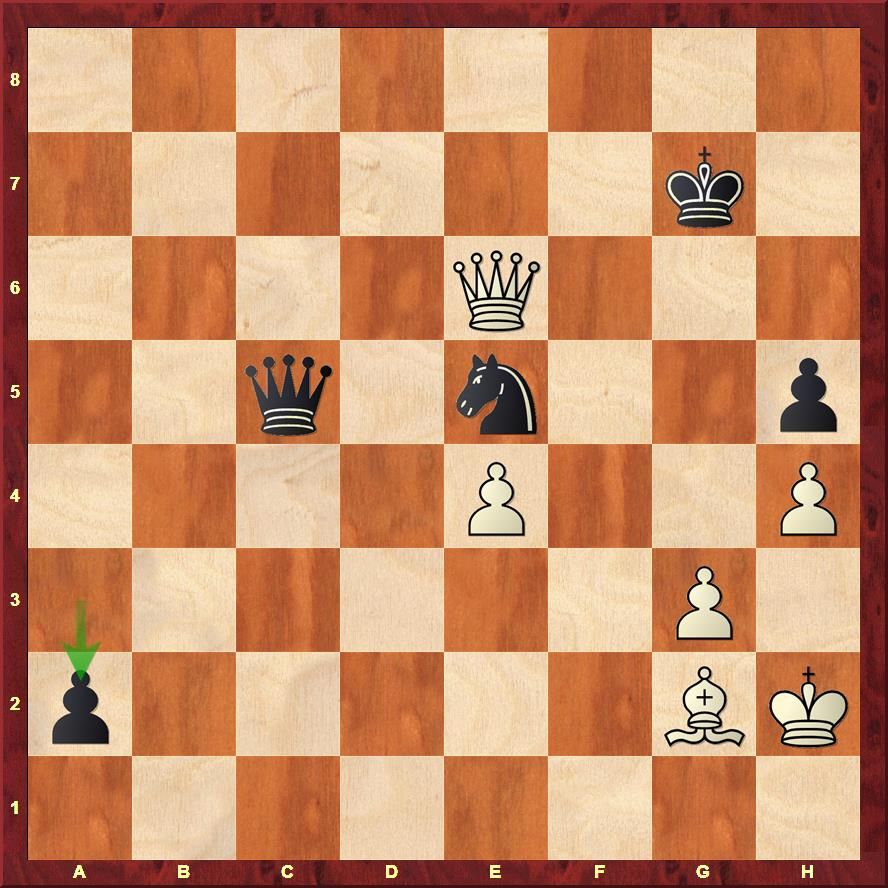
Karjakin is not a guy that you mess with! He regrouped his pieces, pushed his a-pawn and forced Magnus to resign. The obvious 53.Qxa2 loses to 53...Ng4+ 54.Kh3 Qg1! 0-1.
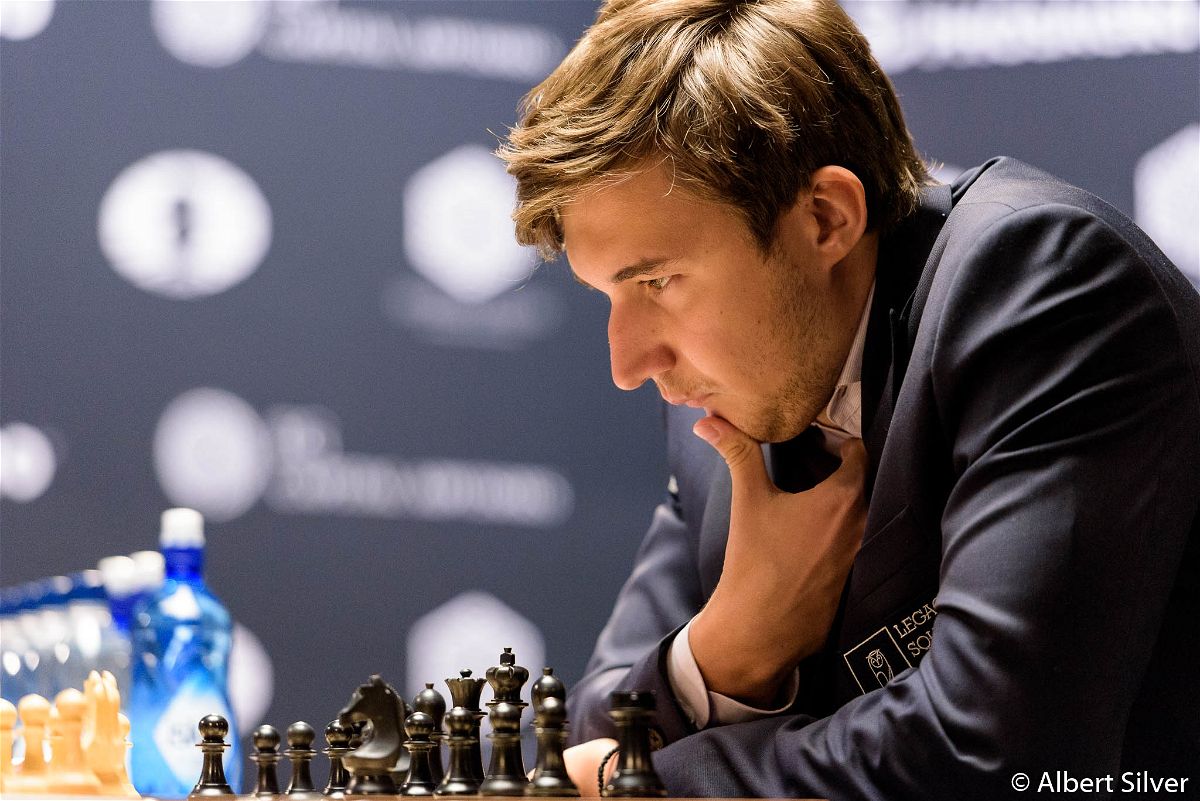
[Site "New York"]
[Date "2016.11.21"]
[Round "8"]
[White "Carlsen, Magnus"]
[Black "Karjakin, Sergey"]
[Result "0-1"]
[ECO "E14"]
[WhiteElo "2853"]
[BlackElo "2772"]
[Annotator "Sagar Shah"]
[PlyCount "104"]
[EventDate "2016.??.??"]
[EventType "match"]
[EventCountry "USA"]
[SourceTitle "playchess.com"]
[Source "ChessBase"]
[TimeControl "40/6000+30:20/3000+30:900+30"]
In the third game he had the upper hand and was very nearly winning, but in
the next encounter, his Italian game was calmly neutralized by Karjakin. This
time he has a new weapon up his sleeve.} Nf6 {[%emt 0:00:06]} 2. Nf3 {[%emt 0:
00:00]} d5 {[%emt 0:00:31]} 3. e3 $5 {[%emt 0:00:00]} (3. Bf4 {could be
expected from Carlsen because he has played it quite a bit in the past. But
Colle?! Well, that's truly a novelty at the World Championship level.}) 3... e6
{[%emt 0:03:01] Quite an umambitious move. Usually when you have the
opportunity to develop the bishop outside the pawn chain you must do it. Here,
for example the move Bg4 or Bf5 would have been natural, but Sergey prefers to
remain solid.} 4. Bd3 {[%emt 0:00:19]} c5 {[%emt 0:01:55] The nice thing about
Colle is that it would lead to a position that Karjakin has not studied in
great depth. But the sad part is that if Black keeps making natural moves,
there is just no way to get the advantage. And this is exactly what Sergey
does: Control the centre and develop the pieces.} 5. b3 {[%emt 0:00:24]} Be7 {
[%emt 0:03:39] 3 minutes 39 seconds is quite a lot of time to think on the
fifth move.} 6. O-O {[%emt 0:01:14]} O-O {[%emt 0:00:06]} 7. Bb2 {[%emt 0:01:
41]} b6 {[%emt 0:02:35] By delaying the development of the b8 knight on what
looked like the most natural square - c6, Karjakin keeps an option to develop
it to d7.} 8. dxc5 {[%emt 0:11:58] Played after twelve minutes of thought. We
are now in terra incoginta.} Bxc5 {[%emt 0:00:19]} (8... bxc5 9. c4 Bb7 10. Nc3
{And a later cxd5, playing against the hanging pawns is what Carlsen wuld have
been trying for.}) 9. Nbd2 {[%emt 0:02:21]} Bb7 {[%emt 0:01:07]} 10. Qe2 {
[%emt 0:05:59]} Nbd7 {[%emt 0:01:02] In this position the knight belongs to
the d7 square. It defends the f6 knight, freeing the queen to go anywhere it
would like to. It also keeps the diagonal of the b7 bishop open.} 11. c4 {
[%emt 0:03:17]} (11. e4 dxe4 12. Nxe4 Nxe4 13. Bxe4 Bxe4 14. Qxe4 Nf6 15. Qe2
Qd5 $11 {With the idea of Qe4 should give Black a fine position.}) 11... dxc4 {
[%emt 0:03:38]} 12. Nxc4 {[%emt 0:00:24] The position is overall symmetrical
in nature. But White has the more active pieces and the chances of fighting
for an opening edge.} Qe7 {[%emt 0:00:08]} 13. a3 {[%emt 0:12:16]} a5 {[%emt 0:
00:30] This move weakens the b5 square, but it has to be made. The bishop on
c5 doesn't have too many squares to go to.} 14. Nd4 {[%emt 0:03:14]} Rfd8 {
[%emt 0:03:40] The most impressive thing about Karjakin's play is always the
simplicity. He makes the most natural and centralizing moves.} (14... e5 15.
Nb5 (15. Nf5 Qe6 {is fine for Black.}) 15... e4 16. Bc2 Nd5 {and with N7f6
coming up, Black has a fine position.}) 15. Rfd1 {[%emt 0:00:17]} Rac8 {
[%emt 0:07:33]} 16. Rac1 {[%emt 0:01:02]} Nf8 $1 {[%emt 0:02:55] A great idea
by Sergey. The knight would be well placed on g6.} 17. Qe1 {[%emt 0:07:14]
Carlsen is looking to somehow make b3-b4 possible in the future.} Ng6 {[%emt 0:
04:50]} 18. Bf1 {[%emt 0:00:39]} Ng4 {[%emt 0:08:03]} 19. Nb5 {[%emt 0:15:13]}
(19. h3 N4e5 20. Nxe5 Nxe5 $11 {The a3 pawn is hanging and Black is really
comfortable.}) 19... Bc6 {[%emt 0:07:45]} (19... Qg5 $1 {would have unleased
some mindboggling tactics.} 20. Nbd6 (20. h3 N4e5 21. Nxe5 Nxe5 22. Bxe5 Qxe5
$15) 20... Bxd6 21. Nxd6 (21. Rxd6 Rxd6 22. Nxd6 Rxc1 23. Bxc1 (23. Qxc1 Qh4
$19) 23... Qe5 $1 $19 {Mate on h2 and d6 piece is lost.}) 21... N4e5 $1 {
Nf3+ is not an easy threat to meet.} 22. f4 Nf3+ 23. Kh1 Qh5 24. Qg3 Rxc1 25.
Rxc1 (25. Bxc1 Nxh2 $19) 25... Rxd6 26. gxf3 Rd2 $17) 20. a4 {[%emt 0:02:29]}
Bd5 {[%emt 0:22:24]} 21. Bd4 {[%emt 0:09:26]} Bxc4 {[%emt 0:01:32]} (21... Bxd4
$1 22. Rxd4 N4e5 $1 23. Nxe5 (23. Nxb6 $2 Qg5 $1 {Not at all an easy move to
foresee.} 24. Kh1 Nf3 $19) 23... Nxe5 $11) 22. Rxc4 {[%emt 0:04:08]} Bxd4 {
[%emt 0:08:41]} 23. Rdxd4 {[%emt 0:05:14]} (23. Rcxd4 $14 {was also pretty
strong.} Rxd4 24. Rxd4 Nf6 25. g3 {And White can push a bit in this position.})
23... Rxc4 {[%emt 0:01:24]} 24. bxc4 $6 {[%emt 0:04:10] Overall this decision
by Magnus isn't so great. He creates a weakness on c4 and in return has no
concrete threats. So, then why did he take with the pawn instead of the bishop.
Well, Magnus has been using the psychology of not making the best possible
moves on many instances in this match in order to avoid drawish positions. But
then he lands into even worse positions. Like he did in game six and now game
eight.} (24. Bxc4 Rxd4 25. Nxd4 $11) 24... Nf6 {[%emt 0:06:47]} 25. Qd2 {
[%emt 0:05:46]} Rb8 {[%emt 0:00:45]} (25... Rc8 26. Nd6 {The rook anyway has
to go to b8.} Rb8) 26. g3 {[%emt 0:02:07]} Ne5 {[%emt 0:02:45]} 27. Bg2 {
[%emt 0:00:03]} h6 {[%emt 0:07:52] Making a luft on the backrank, is never a
priority when there are no threats, but making it surely reduces the stress in
your calculations! Many of your pieces free up.} 28. f4 {[%emt 0:04:18]} Ned7 {
[%emt 0:02:10] The knight has a nice home on c5.} 29. Na7 {[%emt 0:00:50]} Qa3
$1 {[%emt 0:00:10] The knight on d7 could be taken but that just results in
equality. As always Magnus tries for more.} 30. Nc6 {[%emt 0:01:32]} (30. Rxd7
Nxd7 31. Qxd7 Qxe3+ 32. Kf1 Qc1+ 33. Kf2 Qxc4 $11) 30... Rf8 {[%emt 0:00:31]}
31. h3 $6 {[%emt 0:02:09] It was time to just take on d7 and accept the draw.}
Nc5 $15 {[%emt 0:01:12]} 32. Kh2 {[%emt 0:00:10]} Nxa4 {[%emt 0:03:20]} 33. Rd8
{[%emt 0:03:57]} g6 {[%emt 0:00:17]} (33... Rxd8 34. Qxd8+ Kh7 {was als
possible and after} 35. Ne5 Qxe3 36. Nxf7 Kg6 37. Ne5+ Kh7 38. Nf7 $11 {
The game would end in a draw.}) 34. Qd4 {[%emt 0:00:57]} Kg7 $1 {[%emt 0:01:12]
} (34... Qc3 35. Rxf8+ Kxf8 36. Qd8+ Kg7 37. Ne5 {Now Black has to be really
careful as f7 is very soft.} Qb4 38. Qc7 $1 Qf8 39. Bc6 Nc5 40. Qxb6 $14) 35.
c5 $2 {[%emt 0:00:58] Aesthetically this is a pleasing move. Queen cannot take
on c5 as a4 is hanging. Knight cannot take on c5 because after Rxf8 the knight
on f6 is hanging. However, it is a clear blunder and Karjakin shows why.} Rxd8
{[%emt 0:02:13]} 36. Nxd8 {[%emt 0:00:01]} (36. Qxd8 Qxc5 $19) 36... Nxc5 {
[%emt 0:00:28] So what exactly was Magnus thinking? Did he just miss that
Black could first take the rook on d8 and then the pawn? He is now two pawns
down for almost no compensation.} 37. Qd6 {[%emt 0:00:13] Qe7 is a big threat
now.} Qd3 $2 {[%emt 0:00:20] A very bad move by Sergey. But near the time
control, you always tend to make mistakes.} (37... Qa4 $1 {The queen is
planning to come back to d7.} 38. Qxb6 Ncd7 $19) 38. Nxe6+ $1 {[%emt 0:00:19]
Carlsen had this trick already prepared.} fxe6 {[%emt 0:00:59]} 39. Qe7+ {
[%emt 0:00:02]} Kg8 {[%emt 0:00:06]} 40. Qxf6 {[%emt 0:00:00]} a4 {[%emt 0:01:
23] Forty moves have been made and the position is intense. Black's king is
weak, but White has no real time to play against that because the a-pawn is
running. The logical finish to the game should be a perpetual check somewhere,
but when Magnus Carlsen wants to win, he takes risks and shuns such drawish
lines.} 41. e4 {[%emt 0:01:51] The pawn on g6 cannot be saved.} Qd7 {[%emt 0:
08:33]} 42. Qxg6+ {[%emt 0:01:58]} Qg7 {[%emt 0:00:05]} 43. Qe8+ {[%emt 0:00:
08]} Qf8 {[%emt 0:00:04]} (43... Kh7 {was also possible.}) 44. Qc6 {[%emt 0:10:
34]} Qd8 {[%emt 0:04:48] The queen on d8 defends the b6 pawn. The knight on c5
defends the pawn on a4 and e6. So overall everything is well defended.} 45. f5
{[%emt 0:01:23]} a3 {[%emt 0:00:12]} (45... exf5 $2 46. exf5 $18 {Now the
queen+bishop+pawn will checkmate the black king.}) 46. fxe6 {[%emt 0:01:03]}
Kg7 {[%emt 0:00:13] Karjakin maintains his cool. The pawn on e6 is two squares
away from queening and so is the pawn on a3. The computer keeps giving 0.00 as
the evaluation, but on the board the pressure is soaring to unimaginable
levels.} (46... a2 $2 47. e7 $1 Qxe7 48. Qa8+ $1 (48. Qd5+ $2 Qf7 49. Qa8+ Kg7
$19) 48... Kg7 49. Qxa2 $16) 47. e7 {[%emt 0:07:19]} Qxe7 {[%emt 0:00:10]} 48.
Qxb6 {[%emt 0:00:07]} Nd3 {[%emt 0:00:17]} 49. Qa5 {[%emt 0:02:59]} (49. Qd4+
Ne5 $15) (49. e5 {giving back the pawn could have been a good idea to free the
g2 bishop.} Nxe5 50. Qd4 $11) 49... Qc5 {[%emt 0:03:18]} 50. Qa6 {[%emt 0:08:
51]} Ne5 {[%emt 0:00:23]} 51. Qe6 $2 {[%emt 0:04:17] A crucial error.} (51.
Qb7+ Kg6 52. Qa6+ Kf7 53. Qxh6 a2 54. Qh7+ Ke6 55. Qg8+ Nf7 56. Qg6+ Ke7 57.
Qa6 $11 {This should end in a draw now.}) 51... h5 {[%emt 0:05:20] One of the
big threat in this position is h4 gxh4 and Qc7! The queen+ knight and the
a-pawn team up excellently to create som real headaches for White.} 52. h4 $2 {
[%emt 0:02:08] The final mistake of the game.} (52. Qa6 {was the only defence.}
h4 53. gxh4 Qc7 54. Kh1 Qc1+ 55. Bf1 (55. Kh2 Qb2 56. Qa7+ Nf7 $19) 55... a2
56. Qxa2 Qxf1+ 57. Kh2 {Most probably this would end in a draw.}) 52... a2 $1 {
[%emt 0:01:59] Karjakin pushed the pawn and Magnus had no option but to extend
his hand in resignation. The Challenger now leads 4.5-3.5.} (52... a2 53. Qxa2
Ng4+ 54. Kh3 Qg1 55. Bf3 Nf2+ 56. Qxf2 Qxf2 $19) 0-1


As we go into the rest day, it will be thoroughly interesting to see what Magnus will come up with in game nine. Four games to go. Will we have a new World Champion?
Related:
- FWCM 2016 07: Carlsen's carelessness
- FWCM 2016 06: A heavy theoretical battle
- FWCM 2016 05: A perfect draw!
- FWCM 2016 04: Slippery as an Eel
- FWCM 2016 03: A lively Berlin Endgame!
- FWCM 2016 02: Carlsen's mysterious rook moves
- FWCM 2016 01: Carlsen's benign Trumpowsky!
- FWCM 2016: Press Conference and Opening Ceremony
